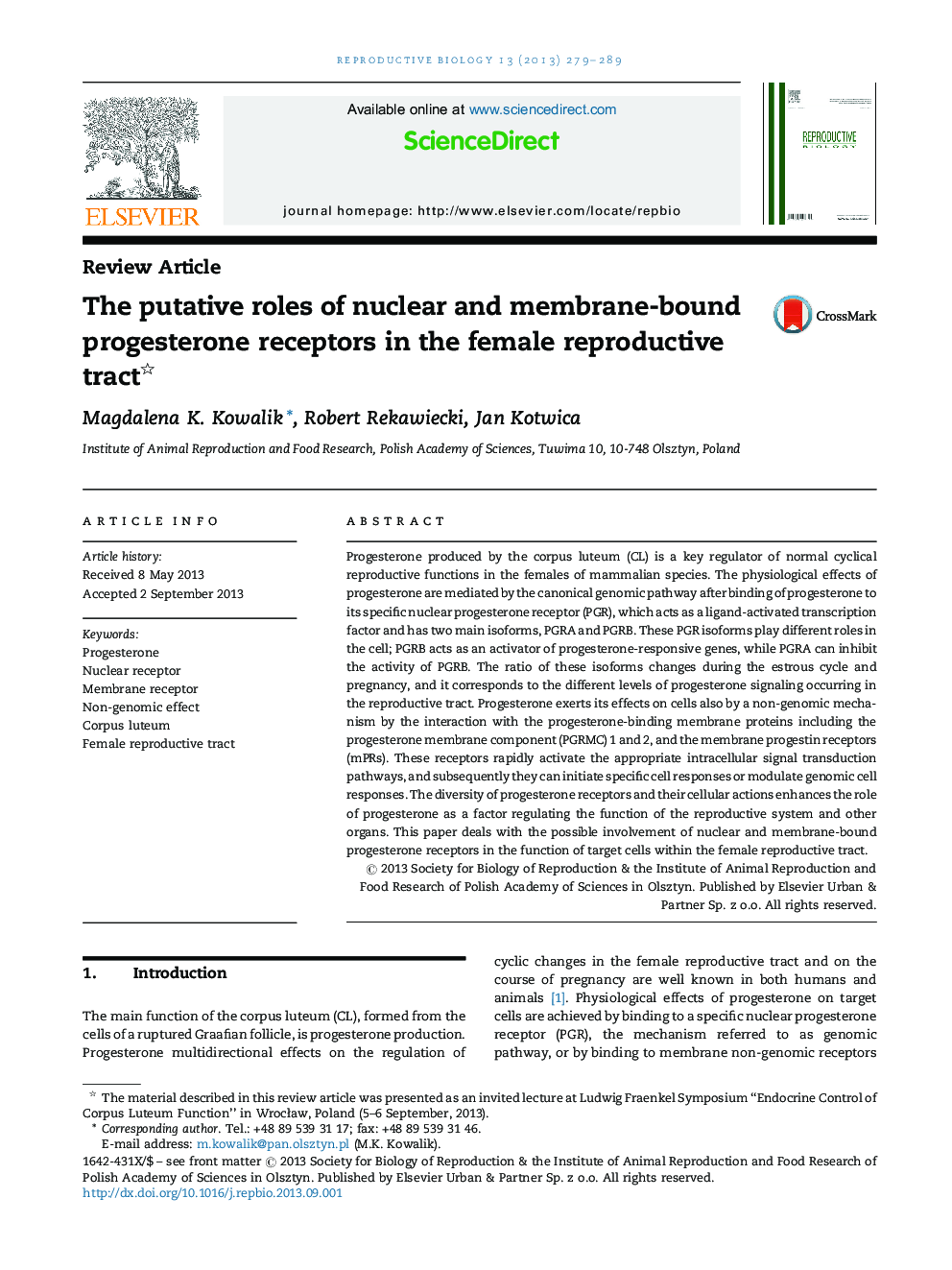| کد مقاله | کد نشریه | سال انتشار | مقاله انگلیسی | نسخه تمام متن |
|---|---|---|---|---|
| 2062463 | 1076609 | 2013 | 11 صفحه PDF | دانلود رایگان |

Progesterone produced by the corpus luteum (CL) is a key regulator of normal cyclical reproductive functions in the females of mammalian species. The physiological effects of progesterone are mediated by the canonical genomic pathway after binding of progesterone to its specific nuclear progesterone receptor (PGR), which acts as a ligand-activated transcription factor and has two main isoforms, PGRA and PGRB. These PGR isoforms play different roles in the cell; PGRB acts as an activator of progesterone-responsive genes, while PGRA can inhibit the activity of PGRB. The ratio of these isoforms changes during the estrous cycle and pregnancy, and it corresponds to the different levels of progesterone signaling occurring in the reproductive tract. Progesterone exerts its effects on cells also by a non-genomic mechanism by the interaction with the progesterone-binding membrane proteins including the progesterone membrane component (PGRMC) 1 and 2, and the membrane progestin receptors (mPRs). These receptors rapidly activate the appropriate intracellular signal transduction pathways, and subsequently they can initiate specific cell responses or modulate genomic cell responses. The diversity of progesterone receptors and their cellular actions enhances the role of progesterone as a factor regulating the function of the reproductive system and other organs. This paper deals with the possible involvement of nuclear and membrane-bound progesterone receptors in the function of target cells within the female reproductive tract.
Journal: Reproductive Biology - Volume 13, Issue 4, December 2013, Pages 279–289